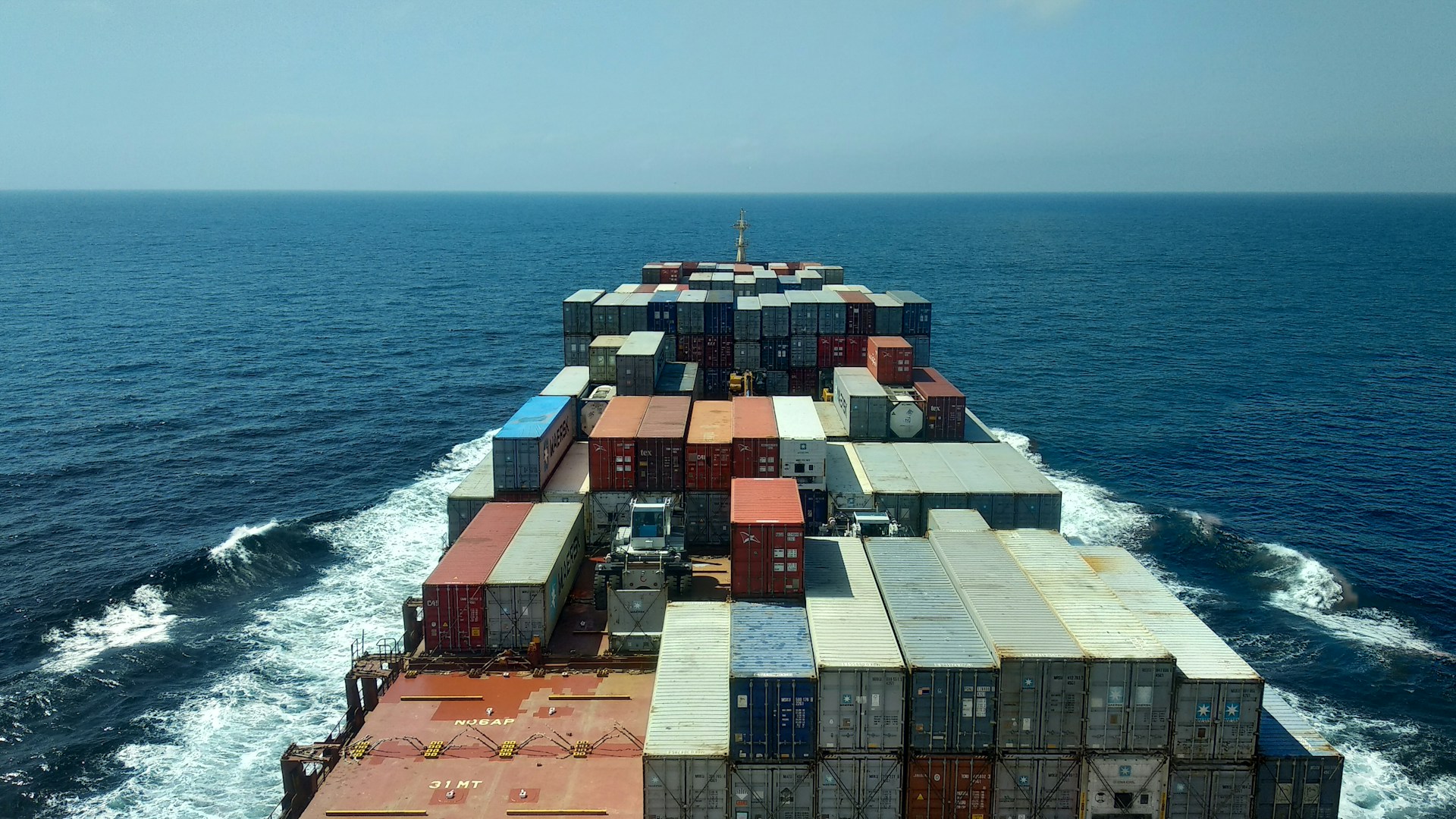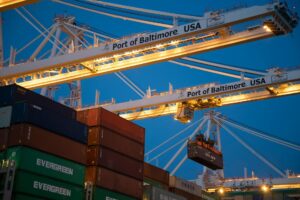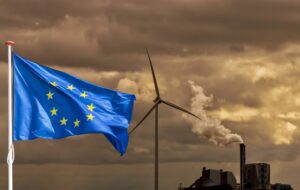The issue of tariffs is becoming increasingly uncertain. The deadline set by Trump to strike deals with countries – including the European Union – on which he had announced his intention to impose new tariffs back in April has been further postponed.
The tariff war carries implications that go far beyond the imposition of trade duties. Tariffs have become a tool for imposing national interests, often at the expense of the rules that govern international markets, mutual relations and fair competition. This dynamic has contributed to increasing uncertainty in a global context already marked by profound instability, starting with Russia’s invasion of Ukraine in 2022.
In dealing with the US administration, Europe will need to keep in mind these four long-term objectives, on which it must not lose ground during negotiations:
- energy security and independence;
- industrial competitiveness;
- the ability to attract investment;
- the role of diplomacy in building international relations.
These four dimensions are the pillars of the Green Deal and provide an important strategic compass for Europe in the context of trade disputes and the fragmentation of global relations.
Energy independence
Around 60% of the energy consumed in the European Union is imported. This figure rises significantly when fossil fuels are considered: approximately 95% of oil and just over 80% of gas consumed in the EU is imported. This makes Europe energy-dependent and particularly vulnerable not only to security threats but also to the volatility of fossil fuel prices, which is driving inflation across the continent. The tariff war and ongoing pressure placed on Europe to access fossil fuel sources demand that we build our energy security on greater independence from external sources. Only then can Europe ensure sustainable energy prices for consumers and businesses, a key objective of the Action Plan on Affordable Energy, presented by the Commission at the end of February as an integral part of the Clean Industrial Deal (CID).
Through the Green Deal, Europe is building its independence, energy security and competitiveness by progressively reducing its dependence on fossil fuels. In the electricity production sector alone, the use of fossil fuels fell by 19% in 2023, while renewables reached a record 44%, driven by wind and solar. Since the Green Deal was launched in 2019, renewables have helped avoid fossil fuel imports worth €59 billion.
Thanks to measures under REPowerEU, in 2022 alone, savings, energy efficiency and the development of renewables contributed to replacing 39 billion cubic metres (bcm) of Russian gas in Europe, around 80% of the annual reduction in gas consumption. The record growth in renewables – 41 GW of solar and 16 GW of wind power – enabled the replacement of 11 bcm that same year and is expected to reduce demand by 15–18 bcm annually once fully operational. In 2022 alone, renewables demonstrated an annual replacement capacity equal to 5% of Europe’s gas demand.
However, despite significant penetration of renewables into the electricity systems, consumer bills remain heavily influenced by natural gas prices, which for many countries, such as Italy, still act as the marginal source setting the price in electricity markets.
The Action Plan on Affordable Energy includes measures to address this challenge by charting a course for energy market reform and introducing guarantee systems, streamlined authorisation processes and Power Purchase Agreements (PPAs), to ensure that consumers benefit more quickly from the price advantages of transitioning away from fossil fuels. The aim is to build a system in which prices more accurately reflect the cost of renewable energy production, enabling the delivery of affordable energy without compromising energy security or competitiveness.
Industrial strategy
In implementing the Green Deal and considering the findings of the Draghi and Letta reports, the Commission has published the framework for what is now the Union’s industrial strategy through the Clean Industrial Deal (CID). The decarbonisation of the economic and industrial system remains the guiding vision for directing investment. The process of defossilising production systems represents not only an opportunity for innovation in Europe but also an opportunity to develop strategic autonomy in clean technologies and production processes, while advancing real energy security, which is one of the foundations for the continent’s competitive recovery.
Energy prices are a key factor in the competitiveness of the production system, and Europe’s dependence on foreign imports is one reason its energy costs are higher than those of its trade partners. To reduce energy costs in the EU, the CID emphasises the need to accelerate electrification and the transition to domestically produced clean energy, complete the internal energy market with physical interconnections and use energy more efficiently.
It is therefore necessary to accelerate the integration of renewables into the electricity system, ensuring that the benefits of lower generation costs are passed on to businesses in an efficient manner. Furthermore, favourable conditions and lead markets for green goods and technologies must be created, starting with favourable conditions in public procurement, enhancing international and commercial dimensions, creating preferential financing channels, building skills and creating jobs.
The pursuit of the energy transition raises critical questions regarding economic security and strategic autonomy. Dependence on raw materials and technologies that are essential to the transition, often concentrated in third countries characterised by political instability or assertive economic policies, exposes Europe to considerable vulnerabilities. The geographical concentration of resources largely extracted or processed in countries such as China, Australia, Chile, Indonesia and the Democratic Republic of Congo, highlights the European Union’s structural dependence on complex global supply chains, which are subject to various shocks and can at times be unreliable.
In this context, the risk affects the very concept of EU strategic autonomy and calls for a reassessment of the concept of interdependence. Dependence on third countries for vital resources and technologies is both an opportunity – to import added value in the form of materials, components and low-cost innovative technology – and to strengthen cooperation; and a risk, as it can undermine Europe’s ability to achieve its political, economic and security goals, making it susceptible to forms of economic coercion, espionage or market shocks stemming from geopolitical tensions. To mitigate these risks, a strategy of “selective cooperation” is required: one that balances targeted openness in strategic sectors such as automotive, critical materials and renewables such as solar, with criteria to strengthen the EU’s production and employment bases, while assessing specific risks.
The package of measures accompanying the Green Deal for an industrial strategy covers the various dimensions of these transformations, including with a Critical Raw Materials Act, an Industrial Decarbonisation Accelerator Act, a new market design and an Affordable Energy Action Plan, all complementing the Clean Industrial Deal.
Ability to attract investment
While the European energy transition involves a degree of dependence on third countries, this is a natural consequence of a globalised economy and the strategic industrial policy choices made by emerging economies over the past three decades. The challenge, therefore, is not to avoid this dependence but to manage and govern it effectively, transforming it into a strategic lever that meets the real needs of people and businesses.
The Letta and Draghi reports both take as a given that the European Union is vulnerable due to its dependence on foreign markets. However, both identify interdependence as an opportunity to build regulatory sovereignty, including through principles of reciprocity, and to influence global standards.
This comes at a time when the return of a Republican administration in the US has triggered a wave of deregulation of the main tools for the energy transition. The policies of the Republican administration, primarily the withdrawal from the Paris Agreement, the “drill, baby, drill” approach which theoretically opens the door to more oil and gas investment (despite early signs to the contrary), and the dismantling of the Biden administration’s Inflation Reduction Act (IRA) are causing instability and unpredictability in markets. The tariff war itself generates uncertainty, not only in terms of tariff levels (on which products? involving which countries?) but also in terms of their duration, as these are often dictated by unilateral interests that may change over time, perhaps due to the very effects of the tariffs themselves.
The growing pessimism about the country’s economic prospects, coupled with the intention to tighten trade tensions with major partners, is prompting many investors to pull out of the American market in search of more stable environments. Likewise, regulatory or policy shifts create uncertainty, making it harder for investors to assess the long-term profitability of their projects.
In contrast, thanks to the scale of its internal market and the robustness of the Green Deal and related decarbonisation policies and tools, including the Commission’s proposal for a new target of a 90% reduction in emissions by 2040, Europe has managed to establish a predictable and secure environment. It stands today as a regulatory and political stronghold within which to direct and attract foreign investment.
In fact, despite a recent global slowdown in foreign direct investment (FDI) due to tariff tensions, geopolitical uncertainty and high energy costs, the EU currently accounts for around 25–32% of global FDI. It also holds a substantial stock of foreign investment: between 2019 and 2023, its global share grew (+2 percentage points towards the east), while its attractiveness to inward investment rose by about 0.5 percentage points. Europe thus remains a key destination for international investment.
Ultimately, beyond a strategy aimed at exploiting short-term opportunities, it is hard to imagine global investors placing faith in the contingent protection offered by tariffs or believing that the incompatibility between fossil fuel use and climate change can be resolved by simply ignoring it.
Geopolitical resilience and the EU’s projection
In 2022, European Commission President Ursula von der Leyen stated that the EU is a “geopolitical” union, acting as a global player in the energy transition and capable of aligning its international positioning and global projection with the demands of decarbonisation. This approach is even more significant in the context of the “economic foreign policy” that the new Commission intends to pursue over the next five years, which sees geopolitical and geoeconomic dimensions as closely intertwined, in response to an international system where alliances, rivalries and competition between powers are increasingly played out in the economic sphere.
Just over three years after its launch in December 2021, the Global Gateway, the main EU initiative aimed at promoting connectivity with and among partner countries, has become a vehicle for advancing the green transition in line with the external objectives of the Green Deal. Consistent with decarbonisation and European competitiveness goals, the Global Gateway aims to offer an alternative to the engagement strategies of other global players, particularly China – having emerged as a response to the Belt and Road Initiative (BRI).
The CID includes an external dimension focused on international projection, aimed at building resilient supply chains, including through free trade agreements and other forms of cooperation and partnership. In this context, the European Commission has recently launched two initiatives: the Global Energy Transition Forum and the Clean Trade Investment Partnerships (CTIPs). The former seeks to unlock private investment and accelerate renewable energy adoption through concrete projects, while the latter aims to complement the EU’s network of trade agreements with a more flexible, targeted approach that allows the negotiation of mini trade deals focused on the energy transition.
It is clear that, in a context where the EU pursues its climate neutrality goals and the transition involves adopting net-zero technologies largely produced in China and other third countries, addressing relations with these countries is vital to manage the political consequences of the European green transition, where a balance will need to be found between de-risking and decarbonisation, especially with regard to supply chains and trade relations.
The CID is also based on a key principle that sees competitiveness and decarbonisation as intrinsically linked. Competitiveness must necessarily be based on the EU’s ability to play a relevant and leading global role political-diplomatic and economic-industrial levels. In other words, the energy transition can and must be an opportunity for Europe to assert itself internationally, rather than losing competitiveness compared to other global powers.
The strength of the Green Deal
These four elements are found within the Green Deal. While some aspects may be controversial or disputed, the very existence of such a robust and comprehensive plan such as the Green Deal, built on these pillars, reflects the foresight of those shaping Europe’s industrial and economic strategy in line with the global challenges that are increasingly present and tangible in everyday life, from climate change to tariffs.
Europe’s response to Trump’s tariffs should therefore not be one of deregulation or simplification of its policies under pressure from external interests. Instead, it should focus on consolidating strategies that allow Europe to strengthen these four dimensions: energy autonomy, industrial competitiveness, the ability to attract investment and global leadership in the transition.
Only by managing these pillars with strategic consistency can Europe strengthen its industrial position, respond to the real concerns of people and businesses regarding energy costs and access to technologies, and assert itself as a truly autonomous geopolitical power in the face of pressure from both the United States and China.
Photo by Rinson Chory







